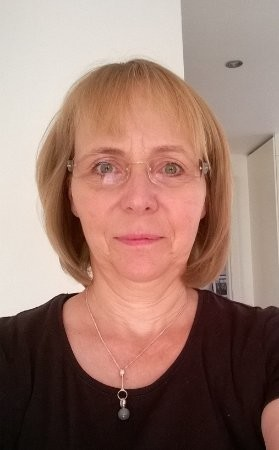
I am a consultant paediatrician specialising in paediatric neurology and rare diseases. I work at the Center for Rett Syndrome and Center for Rare Diseases at the University Hospital Rigshospitalet in Copenhagen, Denmark. I have been Head of the national Danish Rett Center since 2011.
I did my PhD within the clinical genetic area in 2007 (The phenotype of patients with sub-microscopic chromosomal abnormalities and mental retardation. Description of new microdeletion syndromes). Since then, my research focus has been on neurodevelopmental disorders, which in recent years mainly has been within Rett syndrome and related disorders, and Cornelia de Lange syndrome. The focus is both on the molecular causes and mechanisms for disease and on clinical issues and how to manage these.
My clinical work focuses on different rare diseases, including Rett syndrome. At the Rett Center, individuals with Rett syndrome are followed life-long on a regular basis by a multidisciplinary team. The visits result in an individual report concerning management of medical, physiotherapeutic, behavioural and communicative issues. The Center also offers counselling to local institutions such as kindergarten, schools, day care centers and residential facilities, as well as to local healthcare professionals.
You can read more about my work here Research in the clinic for Rett syndrome
Anne-Marie Introduces Herself
Relevant publications
Is it possible to diagnose Rett syndrome before classical symptoms become obvious? Review of 24 Danish cases born between 2003 and 2012
Anne-Marie Bisgaard, Bitten Schonewolf-Greulich, Kirstine Ravn, Gitte Rønde
Lay summary
Rett syndrome (RTT) is a neurodevelopmental disorder that results in multiple disabilities. It also carries a risk of medical comorbidities. It is important to establish the diagnosis as soon as possible to help establish the best treatment opportunities and preventive care in order to slow down the progression of symptoms.
We wanted to test our hypothesis that it is possible to diagnose RTT before the classical symptoms become obvious. We therefore conducted a study in our Danish Center for Rett Syndrome.
We analysed the development and symptoms before and at the time of the RTT diagnosis in a cohort of 24 girls with RTT born in Denmark between 2003 and 2012. Furthermore, we looked at the symptoms that led to a suspicion of RTT resulting in a MECP2mutation analysis.
Nearly 90% of these girls were diagnosed when the classical RTT symptoms as regression of hand function and development of hand stereotypies were recognized. However, it turned out that parents were concerned about their daughters between 3 and nearly 5 years prior to the RTT diagnosis, and they felt that the professionals did not share their concern in the beginning. When reviewing medical files and questionnaires, we noted that the majority of girls did have combinations of concerning symptoms such as developmental delay and a collection of subtle signs such as autistic traits, placidity, floppiness with suspicion of muscular or mitochondrial diseases, hair pulling, teeth grinding, development of incontinence and problems with initiating movements. A third of the girls had been referred to psychiatric evaluation because of a suspicion of autism.
We concluded that many individuals with a MECP2 mutation exhibit characteristics that should raise suspicion for RTT, prior to the evolution of the core clinical symptoms. As RTT is a rare disease, it is of importance to constantly educate clinicians for heightened awareness of RTT.
